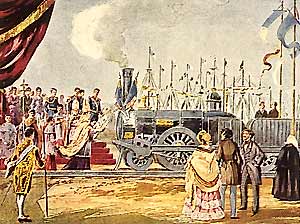|
Carregado
Carregado () is a former civil parish, located in the municipality of Alenquer, in western Portugal. In 2013, the parish merged into the new parish Carregado e Cadafais. It has a population of 9,066 inhabitants and a total area of 15.52 km². The town is a north-east exurb of Lisbon Lisbon (; pt, Lisboa ) is the capital and largest city of Portugal, with an estimated population of 544,851 within its administrative limits in an area of 100.05 km2. Lisbon's urban area extends beyond the city's administrative limits w .... The railway between Carregado and Lisbon was the first line to be built in Portugal; it opened in 1856. See also * History of rail transport in Portugal References Former parishes of Alenquer, Portugal {{Lisbon-geo-stub ... [...More Info...] [...Related Items...] OR: [Wikipedia] [Google] [Baidu] |
Carregado E Cadafais
Carregado e Cadafais is a civil parish In England, a civil parish is a type of Parish (administrative division), administrative parish used for Local government in England, local government. It is a territorial designation which is the lowest tier of local government below district ... in the municipality of Alenquer, Portugal. It was formed in 2013 by the merger of the former parishes Carregado and Cadafais. The population in 2011 was 13,441,Instituto Nacional de Estatística (INE) Census 2011 results according to the 2013 administrative division of Portugal in an area of 24.52 km². References [...More Info...] [...Related Items...] OR: [Wikipedia] [Google] [Baidu] |
Alenquer Municipality, Portugal
Alenquer () is a municipality in the Lisbon District, Portugal. The population in 2011 was 43,267,Instituto Nacional de Estatística in an area of . The present Mayor is Pedro Miguel Ferreira Folgado. History Alenquer received its Foral in 1212 by the hand of '' Infanta'' (Princess) Sancha, Lady of Alenquer, daughter of |
History Of Rail Transport In Portugal
The history of rail transport in Portugal dates from 28 October 1856, when Portugal's first railway line was opened between Lisbon and Carregado: the ''Companhia dos Caminhos de Ferro Portugueses''. The network was gradually expanded both south of the Tagus and to the north of the country, as well as in the metropolitan areas of Lisbon and Oporto and to Spain. In 1887 the Douro railway line was completed; also in 1887 the '' Sud Express'' from Lisbon to France operated for the first time. In 1892 a law was passed creating the Board of Directors of the ''CF Estado'' (State Railways), but most railways remain in private ownership albeit with greater state regulation and requirement for co-operation. In 1910 the Portuguese monarchy was replaced by a republican constitution; there were also notable strikes by railway workers in 1910, 1911, 1912, 1914, 1918, 1919, 1920, 1922 and 1923. In 1926 the railway between Cascais and Lisbon was electrified at 1500 volts DC and the line's n ... [...More Info...] [...Related Items...] OR: [Wikipedia] [Google] [Baidu] |
Centro Region, Portugal
The Central Region ( pt, Região do Centro, ) or Central Portugal is one of the statistical regions of Portugal. The cities with major administrative status inside this region are Coimbra, Aveiro, Viseu, Caldas da Rainha, Leiria, Castelo Branco, Covilhã, Torres Vedras and Guarda. It is one of the seven Regions of Portugal ( NUTS II subdivisions). It is also one of the regions of Europe, as given by the European Union for statistical and geographical purposes. Its area totals . As of 2011, its population totalled 2,327,026 inhabitants, with a population density of 82 inhabitants per square kilometre. History Inhabited by the Lusitanians, an Indo-European people living in the western Iberian Peninsula, the Romans settled in the region and colonized it as a part of the Roman Province of '' Lusitânia''. The Roman town of Conímbriga, near Coimbra, is among the most noted and well-preserved remains of that period. After the fall of the Western Roman Empire, Visigoths were the ma ... [...More Info...] [...Related Items...] OR: [Wikipedia] [Google] [Baidu] |
Oeste (intermunicipal Community)
Comunidade Intermunicipal do Oeste ( or ; in English: Intermunicipal Community of the West; abbreviated OesteCIM) is an administrative division of Portugal, located on the country's western central coast. The population in 2011 was 362,540, in an area of . Caldas da Rainha serves as the seat of OesteCIM. The law establishing the framework for intermunicipal communities and metropolitan areas was approved by the Assembly of the Republic (Assembleia da República) on 27 August 2008. On 25 November 2008, the Associação de Municípios do Oeste (Association of Municipalities of the West), by the approval of the municipal assemblies ('' assembleias municipais'') of each of its constituent municipalities, converted itself into the Comunidade Intermunicipal do Oeste. The law formally establishing the names, borders, and duties of the intermunicipal communities and metropolitan areas was approved by the Assembly of the Republic on 12 September 2013. OesteCIM is the successor to Associa� ... [...More Info...] [...Related Items...] OR: [Wikipedia] [Google] [Baidu] |
Lisbon District
Lisbon District ( pt, Distrito de Lisboa, ) is a district located along the western coast of Portugal. The district capital is the city of Lisbon, which is also the national capital. From its creation until 1926, it included the area of the current Setúbal District. Municipalities The district is composed of 16 municipalities: * Alenquer * Amadora * Arruda dos Vinhos * Azambuja * Cadaval * Cascais * Lisbon * Loures * Lourinhã * Mafra * Odivelas * Oeiras * Sintra * Sobral de Monte Agraço * Torres Vedras * Vila Franca de Xira Summary of votes and seats won 1976-2022 , - class="unsortable" !rowspan=2, Parties!!%!!S!!%!!S!!%!!S!!%!!S!!%!!S!!%!!S!!%!!S!!%!!S!!%!!S!!%!!S!!%!!S!!%!!S!!%!!S!!%!!S!!%!!S!!%!!S , - class="unsortable" align="center" !colspan=2 , 1976 !colspan=2 , 1979 !colspan=2 , 1980 !colspan=2 , 1983 !colspan=2 , 1985 !colspan=2 , 1987 !colspan=2 , 1991 !colspan=2 , 1995 !colspan=2 , 1999 !colspan=2 , 2002 !colspan=2 , 2005 !colspan=2 , ... [...More Info...] [...Related Items...] OR: [Wikipedia] [Google] [Baidu] |
Freguesia (Portugal)
''Freguesia'' (), usually translated as "parish" or "civil parish", is the third-level administrative subdivision of Portugal, as defined by the 1976 Constitution. It is also the designation for local government jurisdictions in the former Portuguese overseas territories of Cape Verde and Macau (until 2001). In the past, was also an administrative division of the other Portuguese overseas territories. The '' parroquia'' in the Spanish autonomous communities of Galicia and Asturias is similar to a ''freguesia''. A ''freguesia'' is a subdivision of a '' município'' (municipality). Most often, a parish takes the name of its seat, which is usually the most important (or the single) human agglomeration within its area, which can be a neighbourhood or city district, a group of hamlets, a village, a town or an entire city. In cases where the seat is itself divided into more than one parish, each one takes the name of a landmark within its area or of the patron saint from the usually ... [...More Info...] [...Related Items...] OR: [Wikipedia] [Google] [Baidu] |
Municipalities Of Portugal
The municipality ( pt, município or ''concelho'') is the second-level administrative subdivision of Portugal, as defined by the 1976 Constitution. As a general rule, each municipality is further subdivided into parishes (''freguesias''); the municipalities in the north of the country usually have a higher number of parishes. Six municipalities are composed of only one parish, and Barcelos, with 61 parishes, has the most. Corvo is, by law, the only municipality with no parishes. Since the creation of a democratic local administration, in 1976, the Portuguese municipalities have been ruled by a system composed of an executive body (the municipal chamber) and a deliberative body (the municipal assembly). The municipal chamber is the executive body and is composed of the president of the municipality and a number of councillors proportional to the municipality's population. The municipal assembly is composed of the presidents of all the parishes that compose the municipalit ... [...More Info...] [...Related Items...] OR: [Wikipedia] [Google] [Baidu] |
Portugal
Portugal, officially the Portuguese Republic, In recognized minority languages of Portugal: :* mwl, República Pertuesa is a country located on the Iberian Peninsula, in Southwestern Europe, and whose territory also includes the Macaronesian archipelagos of the Azores and Madeira. It features the westernmost point in continental Europe, its mainland west and south border with the North Atlantic Ocean and in the north and east, the Portugal-Spain border, constitutes the longest uninterrupted border-line in the European Union. Its archipelagos form two autonomous regions with their own regional governments. On the mainland, Alentejo region occupies the biggest area but is one of the least densely populated regions of Europe. Lisbon is the capital and largest city by population, being also the main spot for tourists alongside Porto, the Algarve and Madeira. One of the oldest countries in Europe, its territory has been continuously settled and fought over since prehistoric tim ... [...More Info...] [...Related Items...] OR: [Wikipedia] [Google] [Baidu] |
Commuter Town
A commuter town is a populated area that is primarily residential rather than commercial or industrial. Routine travel from home to work and back is called commuting, which is where the term comes from. A commuter town may be called by many other terms: "bedroom community" (Canada and northeastern US), "bedroom town", "bedroom suburb" (US), "dormitory town", or "dormitory suburb" (Britain/Commonwealth/Ireland). In Japan, a commuter town may be referred to by the '' wasei-eigo'' coinage . The term " exurb" was used from the 1950s, but since 2006, is generally used for areas beyond suburbs and specifically less densely built than the suburbs to which the exurbs' residents commute. Causes Often commuter towns form when workers in a region cannot afford to live where they work and must seek residency in another town with a lower cost of living. The late 20th century, the dot-com bubble and United States housing bubble drove housing costs in Californian metropolitan areas to ... [...More Info...] [...Related Items...] OR: [Wikipedia] [Google] [Baidu] |
Lisbon
Lisbon (; pt, Lisboa ) is the capital and largest city of Portugal, with an estimated population of 544,851 within its administrative limits in an area of 100.05 km2. Lisbon's urban area extends beyond the city's administrative limits with a population of around 2.7 million people, being the 11th-most populous urban area in the European Union.Demographia: World Urban Areas - demographia.com, 06.2021 About 3 million people live in the Lisbon metropolitan area, making it the third largest metropolitan area in the , after |





